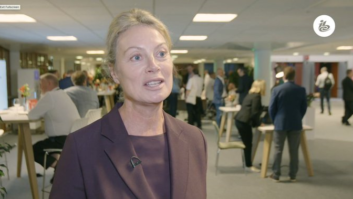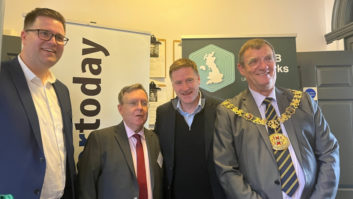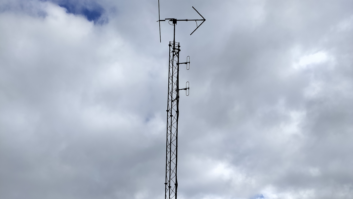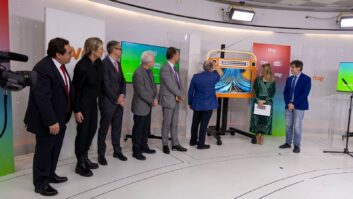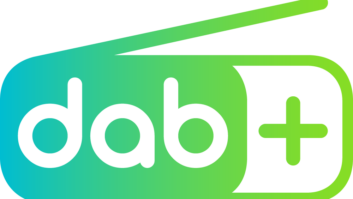NORWICH, England — Ofcom, the British broadcast radio regulator, has extended its current small-scale digital audio broadcasting trial.
Originally intended to last less than a year, the experimental multiplex licensees will all now be permitted to continue broadcasting until at least 2018. In parallel with the extension, the regulator also plans a public consultation later this year, which will examine options for the longer-term licensing of these and further small-scale DAB operations across the United Kingdom.
INITIAL RESULTS

Trial DAB transmitter and filtering is used by small-scale trial operator, Niocast, in Manchester, England.
Ten trial multiplexes are currently operating, with the experiment designed to test the technical and economic viability of DAB as a platform for smaller-scale commercial and community radio services. Such stations did not previously have a route into digital broadcasting, a problematic situation because, over the next few years, the U.K. wants to migrate as many broadcast radio services as possible to digital platforms.
On the technical side of things, the various trials are all considered to have been successful. Single-transmitter services, using open-source encoding and multiplexer software, have run reliably from the outset and the trials have also allowed the development of increasingly robust open-source multiple transmitter networks, as well as providing a greater understanding of how on-channel DAB repeaters can be used in practice.
The trials have, however, identified the issue of radiated signal levels as being a major concern, in particular because of weak signal levels within buildings resulting in poor reception. Some of the low-cost transmitter sites being used are located in residential areas, resulting in a limit to the maximum power level that can be radiated without the risk of damage to the reception of other DAB multiplexes.
Ofcom has been exceptionally cautious in this respect, initially limiting the trial multiplexes to an operational radiated power level of 100 W per transmitter, although some have since been granted a 3 dB power increase (to 200 W ERP). By using higher gain transmission antennas, it is possible to increase radiated power levels to this degree without unwanted impact on other local DAB services.
Although issues around signal strength were perhaps predictable from the outset, another less expected outcome of the trials has been the surprisingly extensive uptake of DAB+ services across many of the trial multiplexes.
TECHNICAL ELEMENTS

The co-linear DAB transmission antenna used by small-scale DAB operator, Niocast, in Manchester, England.
Because this more recent DAB standard is considerably more efficient in terms of spectrum use, it allows a single DAB multiplex to accommodate a much larger number of audio services. Whereas stereo DAB services typically require a data rate of 128 kbps, an equivalent DAB+ service requires only 48 kbps to deliver similar, or marginally improved, audio quality. For mono DAB a typical 80 kbps service needs only 32 kbps for delivery in DAB+.
Economically, a multiplex carrying DAB+ services can deliver a larger number of services, meaning that the operational costs associated with transmission can be more widely dispersed, allowing the charge per service to be reduced. DAB+ therefore makes access to the platform more cost-effective for individual broadcasters and, for multiplex operators, it has the added advantage of providing extra financially stability through the creation of a more widely distributed income stream.
Although there remains a considerable number of DAB-only receivers in use, since about 2010 most designs sold in the U.K. have been DAB+-compatible and complaints about its use on the trial multiplexes have tended to be minimal.
In part, this is probably due to the fact that a number of the services broadcast on the trial multiplexes have a relatively low number of listeners, but it does at least suggest that other uses of DAB+, such as on the U.K.’s recently launched second commercial national DAB multiplex have a good chance of being viable in the longer term.
The reason for the extension of the current trials is primarily the result of a lack of legislative time — the U.K. government is, perhaps not surprisingly, a little wrapped up with the matter of “Brexit.”
However, in February, a so-called private member’s bill, “The Broadcasting (Radio Multiplex Services) Bill,” completed its way through Parliament. Although such bills rarely succeed in becoming law, this one did due to considerable cross-party support and because of close cooperation with the relevant government department, the Department for Culture Media & Sport (DCMS).
FUTURE OPTIONS

Cambridge 105 uses small-scale DAB to serve Cambridge and to extend its broadcast coverage to the city of Norwich on the Future Digital Norfolk small-scale multiplex.
The bill creates a framework licensing structure that will provide for the effective operation of small-scale community run digital radio services.
The Member of Parliament behind the proposal, Kevin Foster, believes that while existing U.K. DAB services are either national or county-sized, the proposed new tier of DAB would fill the “real gap between all that and what most people recognize as the third layer of radio: community radio.” He also points out, “If a community radio station is looking to serve a small community, that might be viable via FM … the jump to DAB is impossible owing to the current licensing structure and the revenues that it would have to produce.”
The bill proposes limiting the coverage of new small-scale radio multiplexes to around 40 percent of the geographical size of current local (countywide) transmissions. It also suggests that the new multiplexes should operate on a noncommercial basis and would allow Ofcom to implement rules that would prevent those with existing interests in national or local DAB multiplexes being involved in their ownership. However, such issues would doubtless be central to Ofcom’s public and industry consultation, which would precede the permanent introduction of such services.
Stating that “the current licensing system has not kept pace with the development of technology,” and that as a result, “a different option is needed for smaller-scale radio stations,” Foster explained that his bill is about giving stations “an option for digital; it is not about forcing them on to digital.”
Responding for the government, Matt Hancock, the minister for Digital and Culture, agreed that the bill is “about adding a capability, not turning off analog.” He suggested that, if all goes well, the legislation should be operational before the current trial licenses expire next year.
Lawrie Hallett, the technical director of Future Digital Norfolk Limited, reports on the industry for Radio World from Norwich, England. He previously worked on community and digital radio policy at Ofcom.





